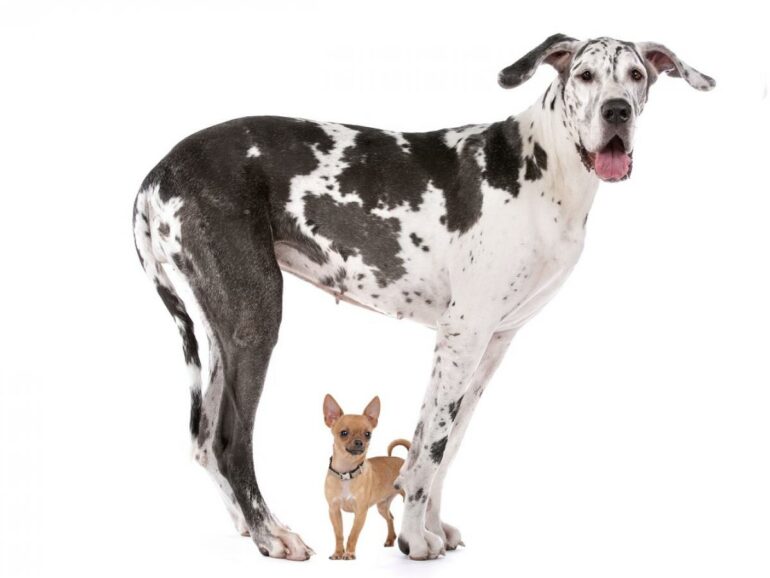Scientists have for the first time explained why larger dogs have shorter lifespans than smaller dogs—selective breeding for size has made large breeds more susceptible to cancer.
University of Adelaide experts examined the causes of differences in lifespan and death in 164 dog breeds, ranging in size from chihuahuas to Great Danes.
“When we analyzed these data sets, we discovered that larger dogs were more likely to die from cancer at a younger age when compared with smaller dogs,” said Dr. Jack da Silva from the University of Adelaide’s School of Biological Sciences.
“Larger dogs didn’t necessarily age faster than the smaller breeds, but the research did show that as the breed’s average body weight increased, so did the rates of cancer.”
“We believe the relationship between a dog’s body size and their lifespan may be caused by an evolutionary lag in the body’s cancer defenses, which are unable to keep up with the rapid and recent selective breeding of bigger dogs,” he said.
The study, which has been published in the journal The American Naturalist, found the shorter lifespans were consistent with a theory of aging known as life history optimization or the “disposable soma.”
“This theory is based on the idea that if you invest most of your resources and energy into growth and reproduction, you can’t also invest them in cell repair and cancer defenses. In all organisms, the focus is on reproducing early, even if it comes at the expense of maintaining and repairing the body and living longer,” said Dr. da Silva.
The results could also be useful when looking at aging in humans.
“Dogs represent a good model for studying aging in humans. Dogs, like humans in the industrialized world, live in an environment that tends to protect them from accidental and infectious causes of death and are thus more likely to die from age-related diseases, such as cancer,” said Dr. da Silva.
Although the results of this survey may be concerning for owners of large dogs, the researchers predict bigger breeds will evolve to develop better cancer fighting genes.
“Most of the 400 or so dog breeds we know today have only been established in the past 200 years. Larger dogs haven’t had time to evolve better cancer defense mechanisms to match their size. This could still happen, but it may come at a cost to reproduction,” said Dr. da Silva.
Dr. da Silva predicts larger breeds will adapt and extend their lifespan but based on the theory of aging, they’re more likely to have smaller litter sizes in the future.
“This may occur naturally or through selective breeding, as people focus on breeding larger dogs that have lower cancer rates and thus greater longevity,” he said.
This research was the result of a year-long comparative analysis study using published data about dog breeds from across the globe.
Dr. da Silva is currently looking into the connection between litter size, cancer rates and lifespan in dogs and other mammals.
More information:
Jack da Silva et al, Dog Life Spans and the Evolution of Aging, The American Naturalist (2023). DOI: 10.1086/724384
Provided by
University of Adelaide
Citation:
Why don’t larger dogs live as long as smaller breeds? (2023, April 11)



